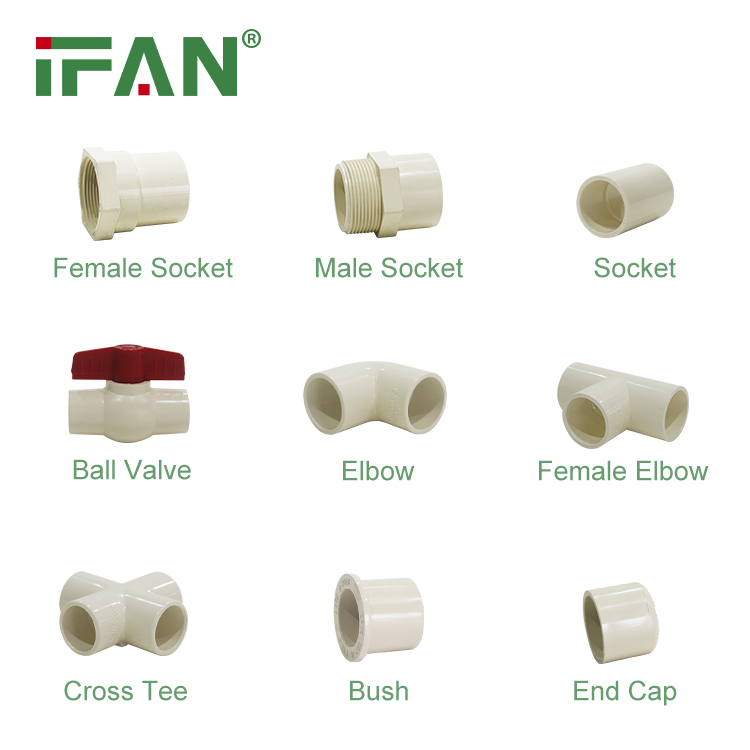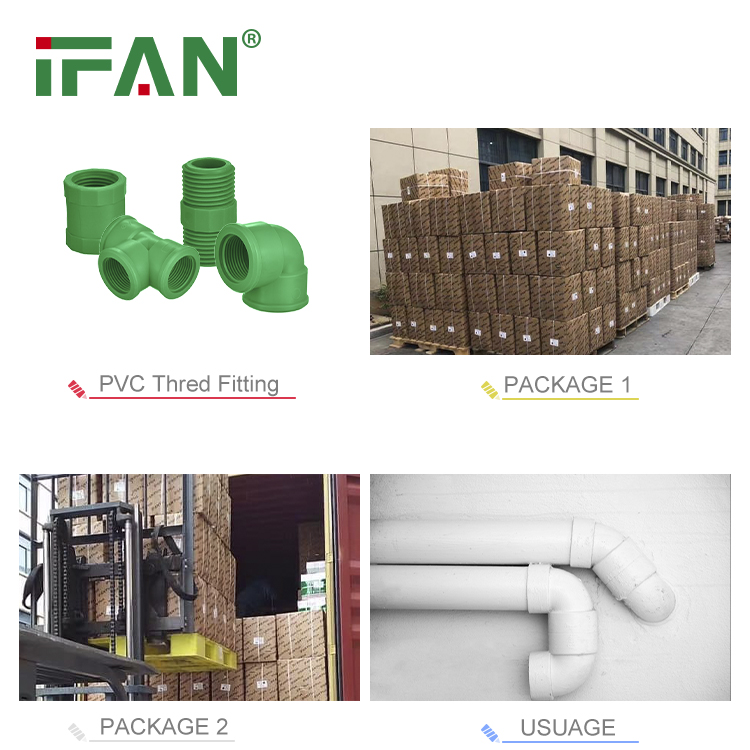UPVC and CPVC are two different plastic materials, and they are quite different in terms of chemical structure, physical properties, and application range.
IFAN factory 30+ years manufacture experience support color/size customization support free sample.Welcome to consult for catalog and free samples.This is our Facebook Website: www.facebook.com
Chemical Structure
First of all, the full name of UPVC is plasticizer-free polyvinyl chloride material, which is a very common plastic material. In contrast, CPVC is a chlorinated polyvinyl chloride material (English name: Chlorinated Polyvinyl Chloride), which has a higher Cl element content than UPVC, so it has stronger high temperature resistance.
Secondly, physically, UPVC is a soft plastic, which is generally harder and more brittle. CPVC is a semi-rigid plastic with physical properties between soft plastic and hard plastic. Because of the higher hardness of CPVC, it has stronger pressure resistance and wear resistance.

Application Range
In terms of practical applications, the difference between UPVC and CPVC is also obvious. Since the processing cost of UPVC is lower than that of CPVC, UPVC is widely used and can be used in the following scenarios:
1. Construction field: UPVC is the most widely used in the construction field, such as making window frames, pipes and doors.
2. Tap water pipes: UPVC does not contain chlorine, is non-toxic and tasteless, and is widely used in the field of drinking water pipes.
3. Packaging field: The good mechanical strength and barrier properties of UPVC make it widely used in the packaging field.

CPVC is usually used in the following scenarios due to its higher heat resistance and corrosion resistance:
1. Chemical industry: CPVC has excellent corrosion resistance and is widely used in the manufacture of chemical raw materials and chemical pipelines.
2. Electric power field: CPVC has good insulation performance and high temperature resistance, and is widely used in power equipment and cable protective sleeves.
3. Automotive field: CPVC’s high temperature resistance also makes it an important material for automotive parts, such as engine covers, automotive water tanks, etc.
To sum up, both UPVC and CPVC are excellent plastic materials, which are suitable for different scenarios. In the process of its application, more attention is paid to environmental protection and safety considerations to create a good ecological environment.

